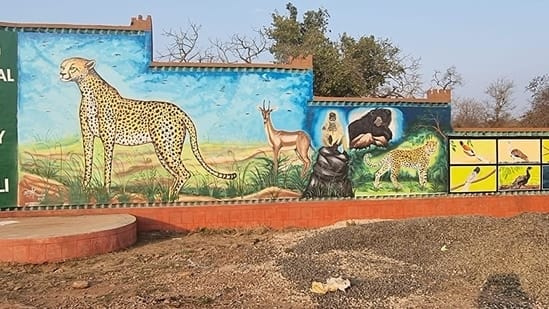Madhya Pradesh’s Kuno National Park, home to Cheetahs from Namibia: 5 points
Cheetahs return to India after 70 years: Of 10 selected places in the country, the Kuno National Park was found most suitable.

With Madhya Pradesh witnessing the arrival of eight Cheetahs from Namibia, the Kuno National Park – in the Vindhyan Hills of central India – becomes the new home of the big cats. The move has been described as “the world’s first transcontinental project to restore large wild animals.” The release of Cheetahs in the National Park coincides with Prime Minister Narendra Modi’s nationwide birthday celebrations. In a tweet, chief minister Shivraj Chouhan – welcoming PM Modi – to the state, wrote: “Today’s day is unprecedented and historic for Madhya Pradesh.”
Here is your five-point cheat sheet:
1. The national park today started “out as a sanctuary of about 350 sq. kms, and it was in the shape of a leaf with the Kuno River forming the main centre spine,” according to its official website.
2. It lies within the Kuno Wildlife division which has a total area of 1235 sq. km. It was converted from a sanctuary to a national park in the 1980s amid a project for reintroduction of Asiatic Lions.
3. The 750 sq km area at Kuno is said to be apt for development of two dozen Cheetahs. This intercontinental translocation of Cheetahs is the first of its kind, with no parallels ever, Indian High Commissioner to Namibia Prashant Agrawal has said.
4. Among the highlights, as per the national park, are the 30,000-year-old cave paintings in nearby Pahargarh depicting multiple wild animals.
5. The park boasts of a rich biodiversity. It has a “total of 123 species of trees , 71 species of shrubs , 32 species of climbers & exotic species, 34 species of bamboos and grasses, 33 species of mammals, 206 species of birds, 14 species of fishes, 33 species of reptiles and 10 species of amphibians.”
Sandeep Raiza — Content Writer, Website Designer, SEO Strategist, and WordPress Expert AI specialist delivering impactful digital solutions that drive business growth.Combining creative storytelling with technical expertise.
